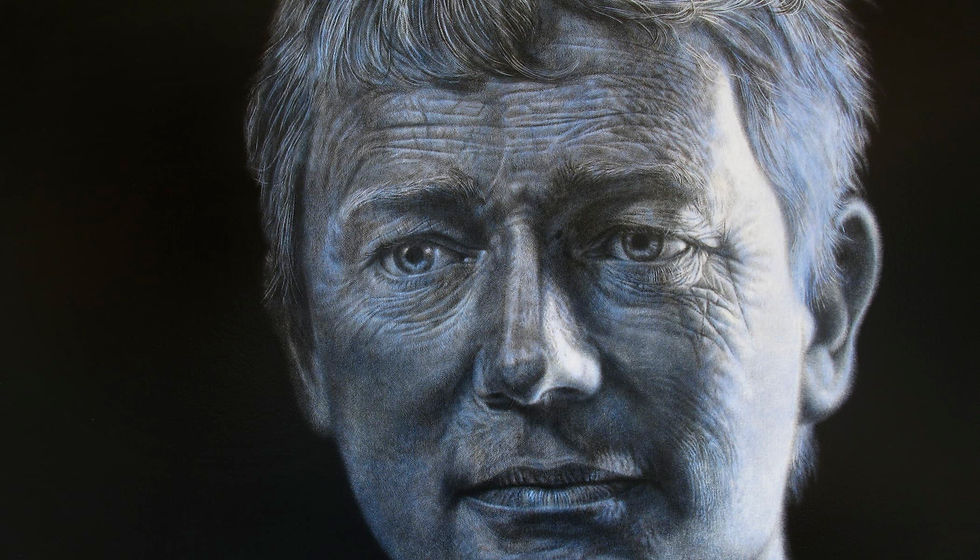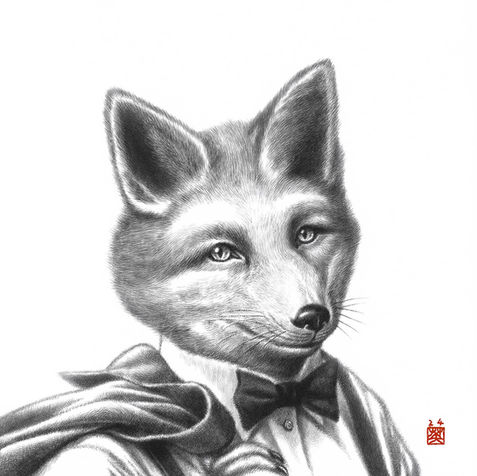
Japanese sumi ink & acrylic
Portrait
What is a portrait? From time immemorial, across all civilisations, one enduring form has remained unchanged: the portrait as a symbol of sovereign authority, power, and splendour. It was nothing less than the deification of the ruler. Yet, as time passed, this form diversified, acquiring layered meanings and undergoing dazzling transformations in its modes of expression. Among these shifts, the advent of photographic art notably disrupted the status of portraiture within painting, compelling painters to seek new avenues of expression. This development also foreshadowed the trajectory of art from abstraction to contemporary forms. Nevertheless, the fundamental nature of portraiture remains unchanged: socially and personally, it depicts the subject, delves into their inner world, and is founded upon the relationship between artist and model—and often, the commissioner.
Some years ago, I attended a retrospective of L. S. Lowry, a master of British modern art, and was deeply moved by one particular work: Lowry’s self-portrait. A solitary spire rises from a vast, desolate grey sea—a plain grey tower, devoid of ornament. Confronted by this work, which so starkly excavates the artist’s own solitude and integrity, I found myself transfixed. Curiously, though it is titled a self-portrait, Lowry’s likeness is nowhere to be seen. He also left behind many “portraits of buildings.” Herein lies the paradox inherent in portraiture. If a work is to be considered a portrait, is it sufficient to meet the aforementioned criteria—depicting the subject, probing their inner life, and revealing relational dynamics? Or is it possible to portray individuals who do not physically exist before the artist as models? For instance, I often paint fallen leaves and small wildflowers, and in doing so, I symbolise the countless unnamed individuals across the world who suffer under poverty, discrimination, and the ravages of war. Through these images, I pose a question—both to myself and to the viewer—about the fragility of existence and the dignity that arises precisely from that ephemerality. If we follow Lowry’s example, might these too be considered portraits?
This question strikes at the heart of the fundamental issues surrounding visual imagery: the distance between seeing and being seen; between illusion and reality; between embellishment and essence; between genders; between body and spirit; between existence and non-existence. Truly, the possibilities of portraiture are boundless.































